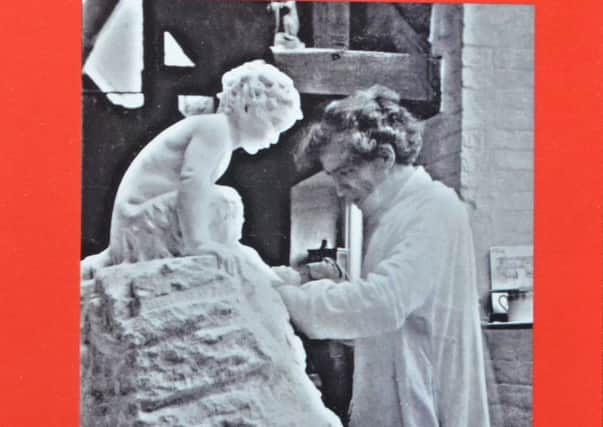Book review: Alec Miller: Carver Guildsman Sculptor


Alec Miller: Carver Guildsman Sculptor by Graham Peel | Self-published, 295pp, £14
The sculptor Alec Miller followed his career first in England and then in America, so perhaps it is not surprising that he does not figure largely in the annals of Scottish art. Nevertheless, he was a classic Scottish lad o’pairts. Against a background of pretty acute disadvantage, he was granted opportunities and made the very best of them. Struck by the injustice of his neglect, Graham Peel has researched, written and indeed, published his biography. It is a good story and well worth the telling. Miller was born in Garnethill, Glasgow, in 1879. His father was a cabinet-maker, but struggled to make ends meet. The family were Baptists. Their religion was central to their lives, but with it went seriousness of mind and determination to improve their children’s lot. So at the age of 12, Miller was apprenticed in a woodcarving workshop set up by Caroline Anstruther. Following Ruskin’s teaching and Morris’s example, in the late 19th century it was thought that art, and especially craft, could be a real force in the amelioration of society’s ills. It was this philanthropic ambition that inspired Anstruther. Miller did well and she encouraged him to study. This included wide reading and also drawing classes at Glasgow School of Art. The most important thing that she did for him, however, was to give him an introduction to the leading Arts and Crafts figure, CR Ashbee, founder of the Guild and School of Handicrafts. This was in 1902, the moment that Ashbee was moving his Guild from the East End of London to Chipping Campden in the Cotswolds. So Miller went straight from Glasgow to work in deepest rural England. Ashbee became his lifelong mentor.
Advertisement
Hide AdThe Guild folded in 1907, but during his time there Miller graduated from decorative woodcarver to sculptor and so in 1908 he set up his own workshop. Religious sculpture and other church furnishings were his main output. Always versatile, this included an altarpiece painted in tempera in the manner of Fra Angelico. The preparation required a study trip to Florence in Ashbee’s company. It was a declining field, however, and marriage in 1909 to Eleanor Bishop added to his sense of responsibility.
A commission for sculptural decoration on the new building of Bryn Mawr College took him to the US, but did not develop further at the time. Working at a bench from such an early age gave him a deformed shoulder which at least kept him out of the war, and it was during the war years that he got his biggest commission. For St Michael’s Coventry, Coventry Cathedral as it became, it included a monumental figure of St Michael. Tragically, of course, the cathedral – and with it, Miller’s whole scheme – was destroyed by German bombs in 1940.
Like many sculptors, Miller was a beneficiary of the tragic boom in war memorials. He also lectured widely on sculpture. Nevertheless, although a line in carved portrait busts was both original and successful, he was increasingly out of step with the taste of the times. In 1939, at his wife’s prompting, but also clearly to escape the imminent war, Miller took his family to America. They settled in California and aged 60 he embarked on a second and very successful career in a new country.
Peel tells the story well. He clearly has rich sources, illustrating particularly well from correspondence Miller’s earnest struggles with the legacy of his religious upbringing. Nevertheless, although there are numerous footnotes, the link between text and sources is not always clear. There are also tantalising references left hanging. Patrick Geddes’s son, Arthur, was evidently apprenticed to Miller, for instance, yet we hear no more about the sculptor’s relationship to the great Scottish champion of the ideals of Ruskin and Morris. In a self-published book, too, the illustrations inevitably don’t really do justice to the works they portray, but that should only shame the professional publishers who might have taken on this project, but didn’t. It is a valuable addition to the history of the later Arts and Crafts Movement and a fascinating footnote to the history of Scottish art.
• To order a copy of Alec Miller: Carver Guildsman Sculptor, email [email protected]